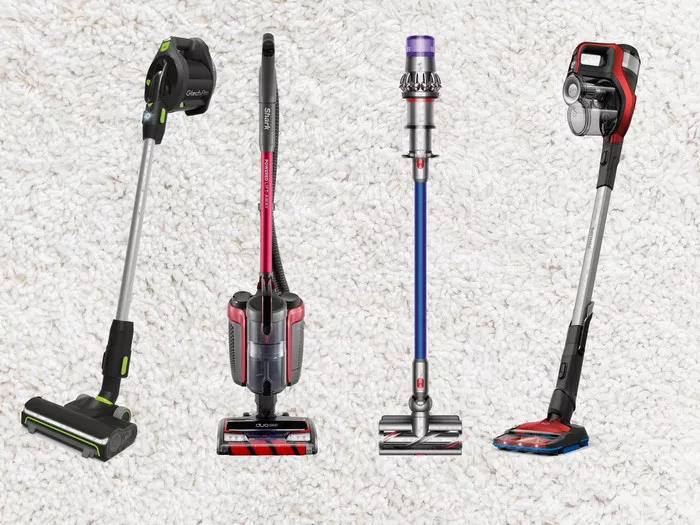Keeping your cleaning equipment in top condition is essential for ensuring efficient and effective cleaning operations. From vacuum cleaners to floor scrubbers, properly maintaining your cleaning arsenal not only extends its lifespan but also saves you money, promotes hygiene, and prevents the spread of germs. In this guide, we’ll explore general maintenance practices, specific equipment care tips, and the importance of preventative maintenance and repairs.
The Importance of Cleaning Equipment Maintenance
Maintaining your cleaning equipment goes beyond simply keeping it clean. It’s about preserving its functionality and performance over time. Here’s why it matters:
1. Extends Lifespan and Saves Money: Regular maintenance helps prevent premature wear and tear, reducing the need for costly repairs or replacements.
2. Ensures Optimal Cleaning Performance: Well-maintained equipment operates at peak efficiency, delivering superior cleaning results.
3. Promotes Hygiene and Prevents Germ Spread: Clean equipment is essential for maintaining a hygienic environment, particularly in healthcare facilities, schools, and other high-traffic areas where germ transmission is a concern.
General Maintenance Practices
Daily Tasks:
1. Emptying Dustbins and Tanks: Regularly emptying dustbins and collection tanks prevents them from becoming overloaded, which can hinder suction and airflow.
2. Rinsing Mops and Cloths: After each use, rinse mops and cloths thoroughly to remove dirt and debris.
3. Wiping Down Equipment Surfaces: Clean equipment surfaces with a damp cloth to remove dust and grime.
4. Checking for Clogs and Blockages: Inspect hoses, filters, and brushes for any obstructions that may impede performance.
See also: A Simple Guide: Should You Clean the Toilet After Every Use?
Weekly Tasks:
1. Deep Cleaning of Mops and Cloths: Wash or disinfect mops and cloths weekly to prevent bacterial growth and odors.
2. Replacing Disposable Parts: Replace filters, bags, or other disposable parts as needed to maintain optimal performance.
3. Lubricating Moving Parts: Follow the manufacturer’s recommendations for lubricating moving parts to prevent friction and wear.
Storage:
1. Storing Equipment in Designated Areas: Store cleaning equipment in dry, well-ventilated areas to prevent moisture buildup and corrosion.
2. Ensuring Proper Drying of Mops and Cloths: Hang mops and cloths to dry thoroughly to prevent mildew and musty odors.
3. Following Manufacturer’s Storage Instructions for Chemicals: Store cleaning chemicals according to the manufacturer’s guidelines to ensure safety and effectiveness.
Specific Equipment Maintenance
Vacuum Cleaners:
1. Emptying Dustbins and Replacing Filters Regularly: Regularly empty dustbins and replace filters to maintain suction power and airflow.
2. Checking Hoses and Attachments: Inspect hoses and attachments for signs of wear and tear, such as cracks or splits.
3. Maintaining Brush Rollers and Belts: Clean brush rollers and replace worn belts to ensure proper agitation and brush action.
Mops and Buckets:
1. Selecting the Right Mop Head: Choose the appropriate mop head for the floor surface to achieve optimal cleaning results.
2. Rinsing and Washing Mop Heads: Rinse mop heads after each use and wash them with appropriate detergents to remove dirt and bacteria.
3. Disinfecting Mop Buckets: Disinfect mop buckets regularly to prevent bacterial growth and cross-contamination.
Microfiber Cloths:
1. Washing with Hot Water and Gentle Detergent: Launder microfiber cloths with hot water and a mild detergent to remove dirt and grease effectively.
2. Air Drying or Machine Drying: Allow microfiber cloths to air dry or machine dry them on low heat to maintain their softness and absorbency.
3. Replacing Worn-Out Cloths: Replace microfiber cloths when they become worn or lose their effectiveness.
Floor Scrubbers and Polishers:
1. Following Manufacturer’s Instructions for Pad Selection: Use the appropriate pads for the type of flooring being cleaned and follow the manufacturer’s recommendations for pad selection.
2. Cleaning and Inspecting Pads: Clean and inspect pads after each use to remove debris and prolong their lifespan.
3. Regularly Checking Brushes and Squeegees: Inspect brushes and squeegees for wear and tear, and replace them as needed to ensure proper cleaning and water recovery.
See also: Do Pressure Washers Lose Pressure Over Time?
Preventative Maintenance and Repairs
Scheduling Regular Professional Maintenance:
1. Identifying Early Signs of Wear and Tear: Regular inspections can help identify early signs of wear and tear, allowing for timely repairs or replacements.
2. Addressing Minor Issues Promptly: Minor issues, such as loose screws or damaged hoses, should be addressed promptly to prevent them from escalating into major breakdowns.
Conclusion
Proper maintenance of your cleaning equipment is essential for preserving its performance, extending its lifespan, and promoting hygiene. By adhering to a regular maintenance schedule and following manufacturer’s guidelines, you can ensure that your cleaning arsenal operates at peak performance for years to come. Remember to schedule professional maintenance when necessary and address any issues promptly to prevent costly repairs. For specific maintenance instructions, always refer to the manufacturer’s manuals and guidelines. With proper care and maintenance, your cleaning equipment will continue to deliver outstanding results, keeping your environment clean, safe, and healthy.


